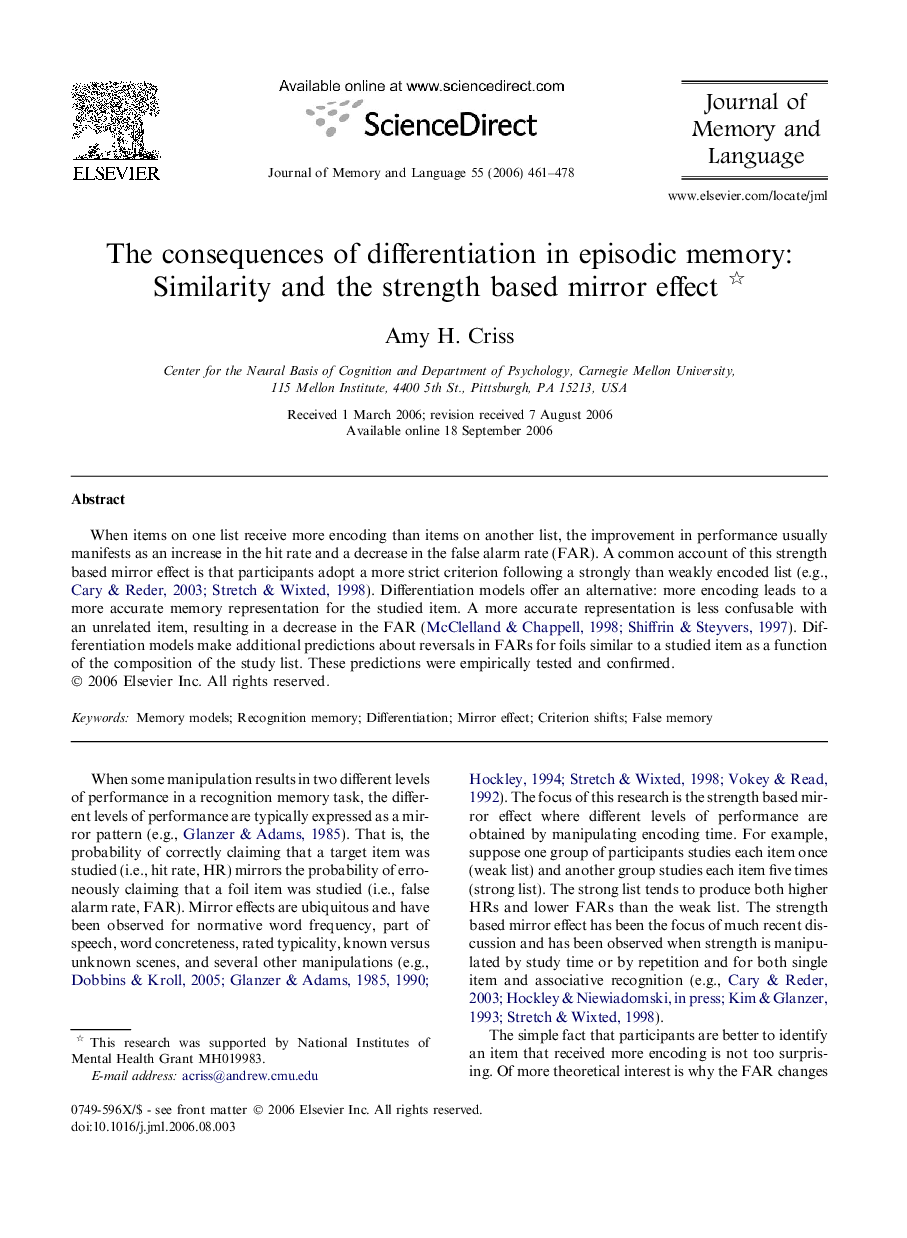| Article ID | Journal | Published Year | Pages | File Type |
|---|---|---|---|---|
| 10459783 | Journal of Memory and Language | 2006 | 18 Pages |
Abstract
When items on one list receive more encoding than items on another list, the improvement in performance usually manifests as an increase in the hit rate and a decrease in the false alarm rate (FAR). A common account of this strength based mirror effect is that participants adopt a more strict criterion following a strongly than weakly encoded list (e.g., Cary and Reder, 2003, Stretch and Wixted, 1998). Differentiation models offer an alternative: more encoding leads to a more accurate memory representation for the studied item. A more accurate representation is less confusable with an unrelated item, resulting in a decrease in the FAR (McClelland and Chappell, 1998, Shiffrin and Steyvers, 1997). Differentiation models make additional predictions about reversals in FARs for foils similar to a studied item as a function of the composition of the study list. These predictions were empirically tested and confirmed.
Related Topics
Life Sciences
Neuroscience
Cognitive Neuroscience
Authors
Amy H. Criss,
